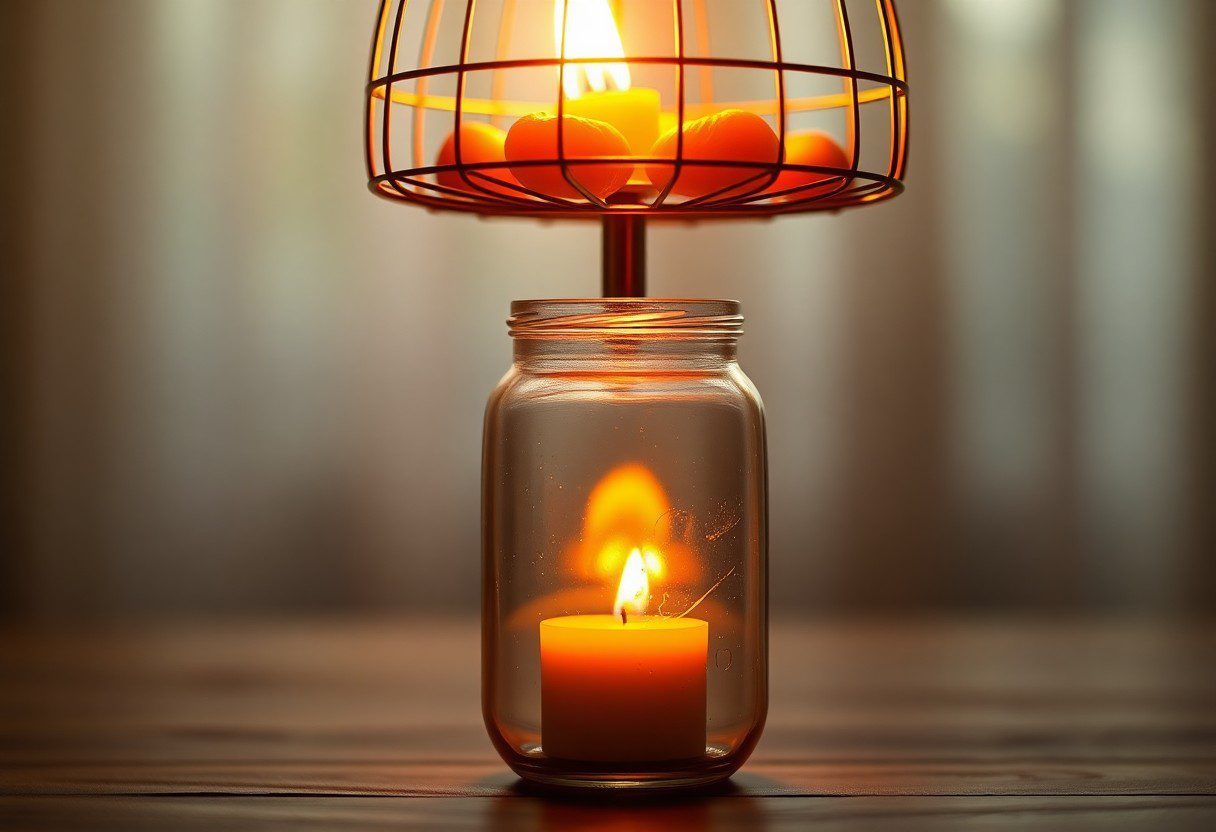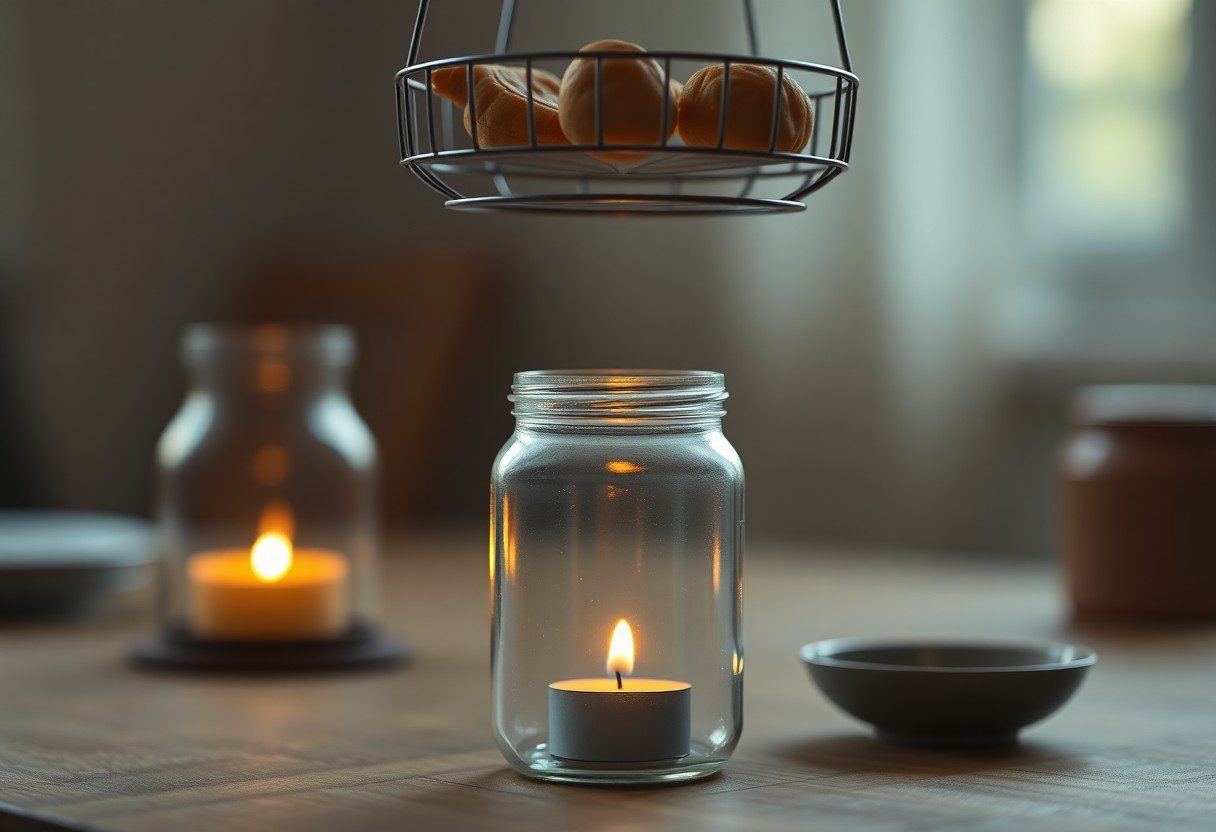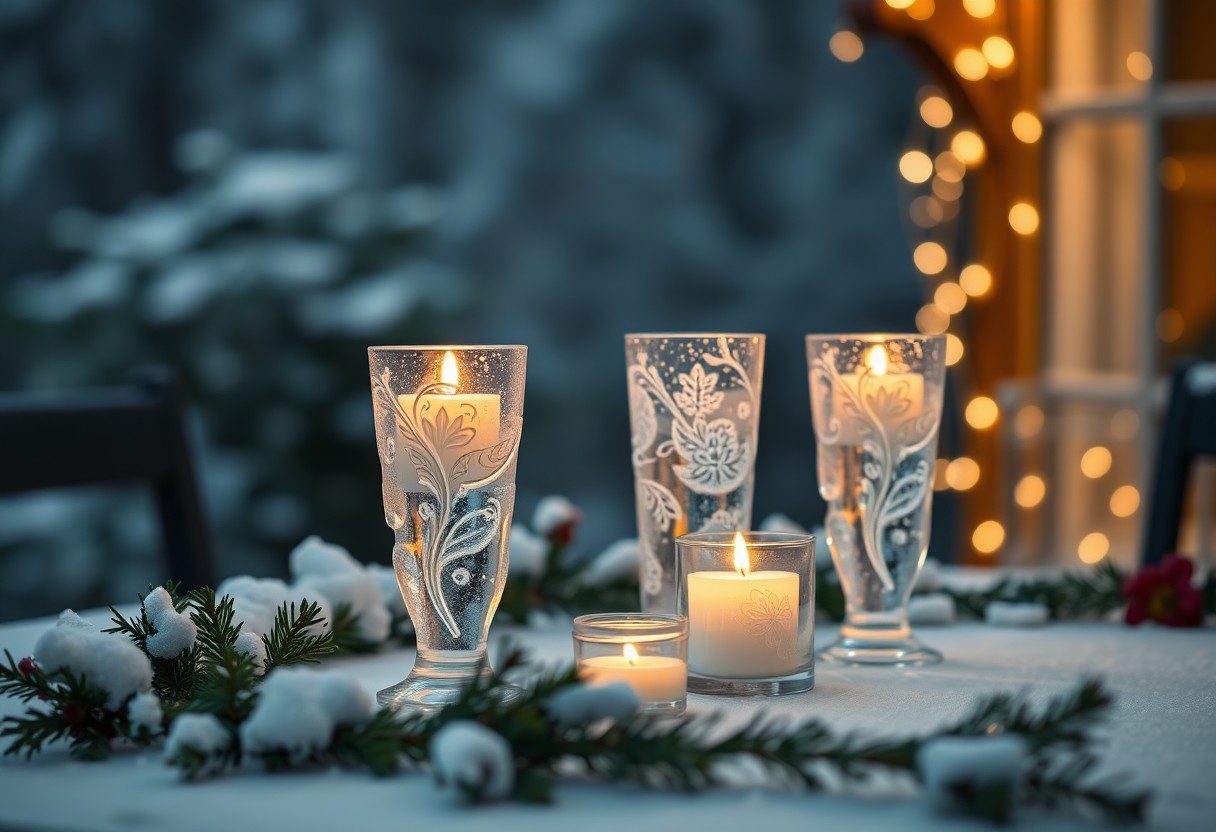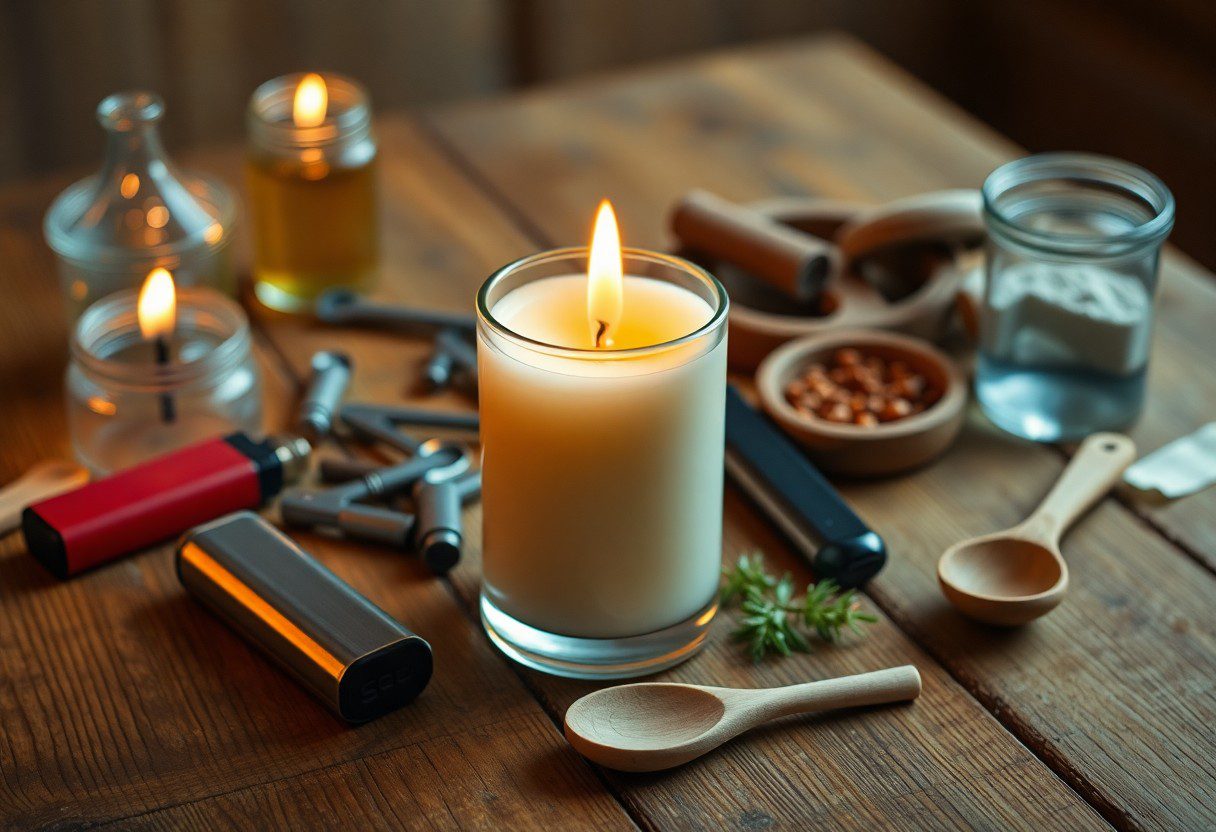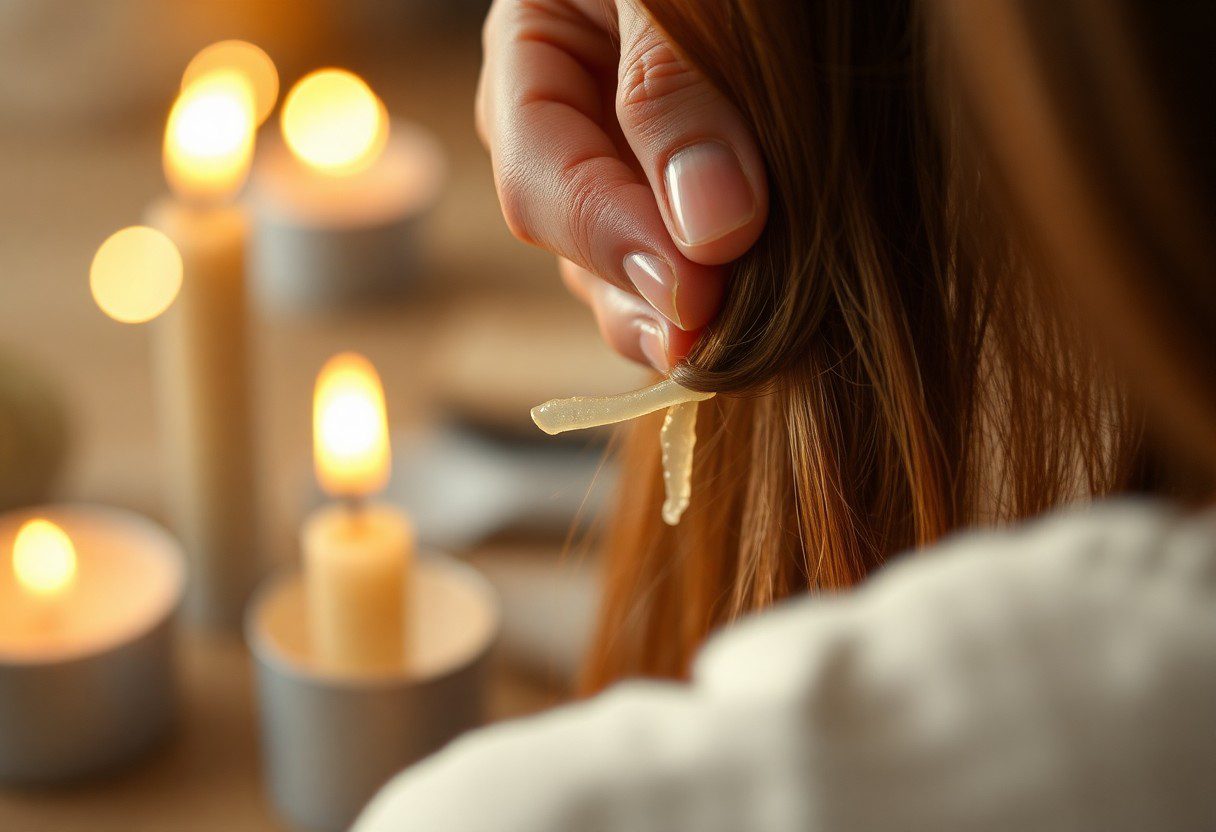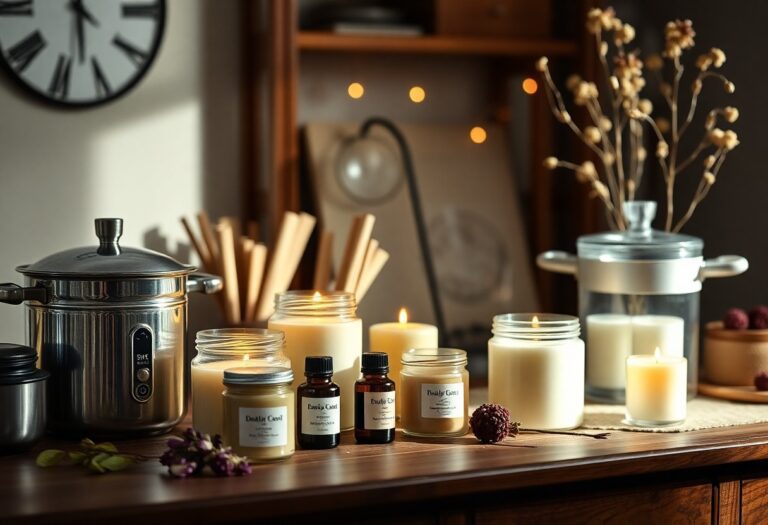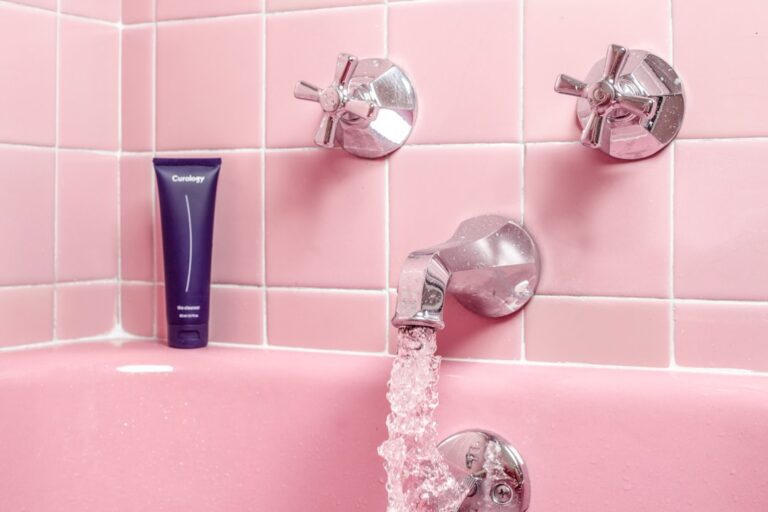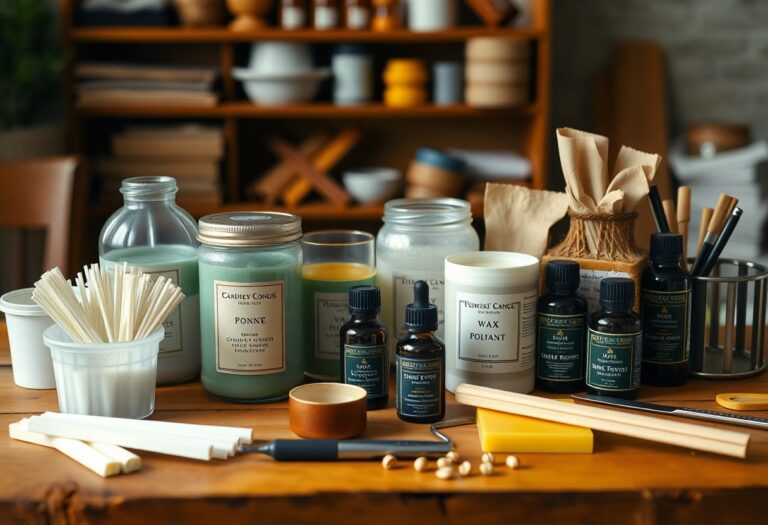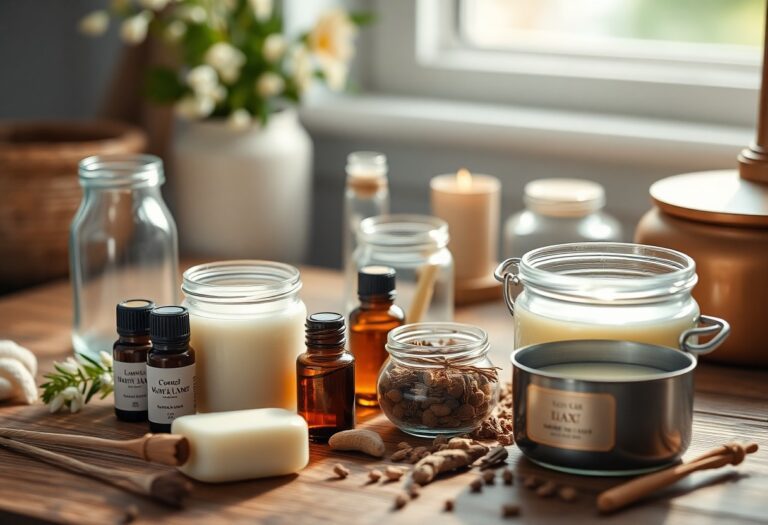how to make candle heater
With a few simple materials, you can create your own candle heater to warm up small spaces or enjoy a cozy ambiance. This DIY project not only provides a source of heat but also adds a charming aesthetic to your home. Using candles safely is paramount; always ensure they are placed in stable, heat-resistant holders and never left unattended. As you launch on this crafting journey, you’ll discover how effective and eco-friendly your homemade candle heater can be, turning everyday candles into a delightful source of warmth for your personal space.
Understanding the Candle Heater Concept
Before exploring the benefits of a candle heater, it’s important to grasp how it operates. A candle heater importantly harnesses the heat produced by a burning candle to warm your space. It transforms the simplest element of fire into a functional tool that can provide comfort and warmth. This innovative idea allows you to create a cozy ambiance, especially during colder months, while utilizing a readily available and inexpensive resource.
Principles of Heat Generation
Principles of a candle heater hinge on the concept of thermodynamics. As the candle burns, it generates heat energy through combustion. This heat warms the surrounding air, which can then be spread throughout the room via convection. Additionally, the candle’s flame heats up a surface, such as a metal or ceramic dish, further enhancing its heating capacity. The efficiency of this system can vary based on the type of candle and the materials used.
Benefits of Using a Candle Heater
Below are a few of the benefits of using a candle heater in your home. This method is not only an effective alternative to electric heaters, but it also creates a warm and inviting atmosphere. Candle heaters are eco-friendly, reducing your carbon footprint while offering a cost-effective solution to heating. Additionally, using candles can add a touch of elegance and relaxation to your space, contributing to a soothing environment.
Further, the benefits of using a candle heater extend beyond just warmth. This method is affordable, as candles are generally inexpensive and widely available. You can enjoy the ambiance of candlelight while simultaneously warming your space. It’s a fantastic way to reduce energy consumption during colder months. However, always exercise caution to ensure safety; candles can pose fire hazards if left unattended or placed too close to flammable materials. Prioritize safety to fully appreciate the benefits of this quaint heating method.
Materials Needed for Your Candle Heater
Now, let’s gather the important materials needed for your candle heater. You will require a candle, a heat-resistant surface, a small saucepan or a double boiler, and some water. Additionally, make sure to have a few decorative elements if you want to personalize your heater. With these items in hand, you are on your way to creating an efficient and functional candle heater for your space.
Safe Candle Options
At the outset, it’s important to consider safe candle options when crafting your heater. Choose candles made from natural materials, such as beeswax or soy, as they tend to burn cleaner and produce fewer harmful fumes. Avoid candles containing synthetic fragrances or additives, as they may release toxins when heated. Selecting the right candle can enhance both your safety and your overall experience.
Necessary Tools and Equipment
By ensuring you have the right tools and equipment, you can optimize your candle heater experience. You will need a lighter or matches for igniting the candle, a small plate or heat-safe dish to hold the candle, and a pair of tongs for safe handling. These tools will help you set up your candle heater effortlessly and safely.
Another important aspect of your preparation involves selecting high-quality tools to ensure efficient operation. Using a reliable lighter or matches will allow you to easily ignite the candle without fuss. A good pair of tongs will not only allow you to adjust the setup safely, but also protect your hands from heat. By utilizing these necessary tools and prioritizing safety, you can enhance the performance of your candle heater while minimizing risks during the process.
Step-by-Step Guide to Making a Candle Heater
Any DIY enthusiast can create a functional candle heater at home. Follow this detailed guide that breaks down the process into manageable steps. For a more hands-on approach, you might want to check out this Clay Pot Heater With Fan – Powered by Candles (DIY) tutorial.
| Step | Description |
|---|---|
| 1 | Gather materials |
| 2 | Prepare your workspace |
| 3 | Constructing the heater |
| 4 | Testing and Adjustments |
Preparing Your Workspace
To ensure a smooth candle heater-making experience, begin by organizing your workspace. Clear away any clutter and gather all necessary materials, including clay pots, candles, and a heat-proof surface. Make sure to work in a well-ventilated area to avoid any buildup of fumes.
Constructing the Heater
With your materials in place, you’re ready to start constructing the heater. Layer the clay pots in a way that maximizes heat retention, and place the candles securely at the base. Light the candles and let the pots do their job as they absorb and radiate warmth.
Guide your construction by ensuring that your clay pots are stacked correctly for optimal heat output. It’s important to keep an eye on the candles; never leave them unattended. Use heat-resistant surfaces to avoid accidental fires, and feel free to experiment with the design to improve efficiency. Your safety and comfort should be your top priority as you create your warm ambiance.
Safety Precautions
All candle heater projects require strict adherence to safety precautions to ensure your well-being and avoid accidents. Always supervise the candle while in use, keep flammable materials away, and consider using a sturdy holder to contain the melting wax. By staying vigilant, you can enjoy your candle heater safely and efficiently.
Fire Safety Guidelines
Below are important fire safety guidelines to follow when using your candle heater. Always place the heater on a non-flammable surface and never leave it unattended. Additionally, ensure that the candle wicks are trimmed to prevent excessive flames, and keep a fire extinguisher nearby, just in case.
Proper Ventilation
To maintain a safe environment while using your candle heater, ensure adequate ventilation. This helps to disperse any harmful fumes and reduces the risk of carbon monoxide accumulation. Utilize a fan or slightly open windows to circulate fresh air.
Even though candle heaters can create a cozy ambiance, poor ventilation can lead to potentially dangerous fumes entering your space. Make it a habit to use your heater in well-ventilated areas, as this not only enhances safety but also improves the overall quality of your indoor air. Ensure that you are not enclosing the space where the heater is operating, and avoid placing it near vents or other areas that may obstruct airflow.
Enhancing Your Candle Heater Experience
Once again, enhancing your candle heater experience involves integrating elements that elevate both fragrance and ambiance in your space. By choosing quality materials and incorporating various accessories, you can create a cozy atmosphere that complements your lifestyle. Pay attention to the setting, as it will not only improve the aesthetic but also intensify the overall effectiveness of your candle heater.
Choosing Essential Oils
Against popular belief, not all vital oils are created equal when it comes to candle heating. You should opt for high-quality oils that are specifically designed for use with candles, as they release fragrant notes more effectively. Familiarize yourself with scents that resonate with you, ensuring a personal touch to your heating experience.
Adding Decorative Elements
For an inviting atmosphere, consider adding decorative elements to your candle heater setup. These elements not only enhance the visual appeal but also create a personalized touch that reflects your style. You can use items like stones, flowers, or decorative trays, as long as they are non-flammable and designed for safety around a heat source.
Elements like colored stones, dried flowers, or artfully arranged pebbles can significantly boost the ambiance around your candle heater. Ensure that the materials you choose are a safe distance from the heat and won’t easily catch fire. Opt for fire-safe containers or accessories that will not warp or melt, as these can add beauty while also minimizing risk. Striking a balance between function and flair enhances the overall experience without compromising safety.
Maintenance and Care for Your Candle Heater
Keep your candle heater in optimal condition by regularly checking the candles and ensuring that the area around the heater is clear of any flammable materials. For detailed insights on crafting your own heater, check out How To Make A Budget Terracotta Pot Heater. This will enhance the safety and efficiency of your heater.
Cleaning Tips
For your candle heater to function effectively, it requires regular cleaning. Here are some tips:
- Gently wipe it down with a damp cloth.
- Remove any wax residue from the burner area.
- Ensure the tea light holder is free from soot.
The cleaner your heater, the better it will perform.
When to Replace Candles
With your candle heater, it’s imperative to monitor the candles closely to ensure optimal heating. Replace the candles once they’ve burned down to about one inch, or if you notice any flames flickering or becoming unstable.
Even if the candles appear to have a little wax left, it’s important to prioritize safety. A weak flame can produce less heat and increase safety risks, such as fire hazards or wax spills. Regularly check your setup, and don’t hesitate to replace candles to maintain a safe and effective heating experience.
Summing up
Conclusively, making your own candle heater is a straightforward process that allows you to enjoy warm ambiance while reusing materials. You start by choosing a heat-resistant container, then place a candle inside, ensuring it is stable. Add a heat-conductive surface, like a metal plate, above the candle to maximize heat distribution. Lastly, light the candle and relish the warmth it provides. This DIY project not only saves energy but also adds a personal touch to your space.
FAQ
Q: What materials do I need to make a candle heater?
A: To create a simple candle heater, you will need the following materials: a heat-resistant base (like a ceramic or metal dish), a candle (tea light or pillar), a small pot or container (that will hold your heating substance), and some natural insulating material (such as sand or pebbles) to stabilize the pot and distribute heat evenly. Optional items include a wick trimmer and a lighter or matches for safety and convenience.
Q: How do I set up my candle heater for optimal efficiency?
A: Start by placing the candle securely in the center of the heat-resistant base. If you’re using a small pot to hold water or important oils, position it directly above the candle. Ensure there is enough space between the candle flame and the pot to prevent any risk of overheating. Surrounding the pot with insulating material like sand or pebbles can help retain heat and enhance the efficiency of the heater. Always keep an eye on the candle while it’s burning to ensure safety.
Q: How long can I expect my candle heater to provide heat?
A: The duration of heat from a candle heater largely depends on the size of the candle used. A standard tea light can burn for about 4-6 hours, while a larger pillar candle may last anywhere from 20 hours to over 100 hours, depending on its size and wick quality. To maximize your heating time, consider using larger candles and keep the area around the heater relatively free from drafts, which can cause the flame to flicker and reduce its efficiency.

